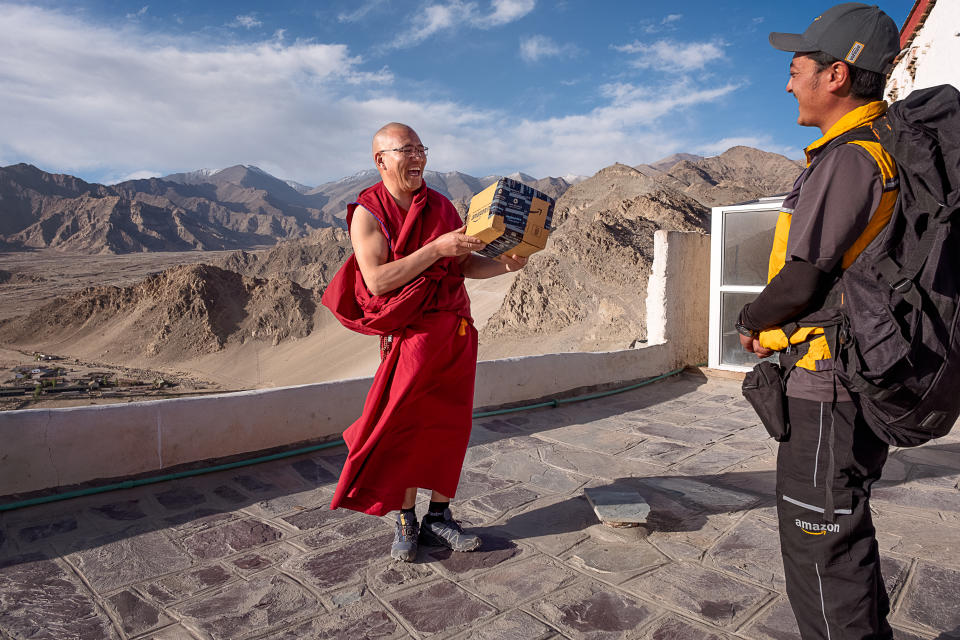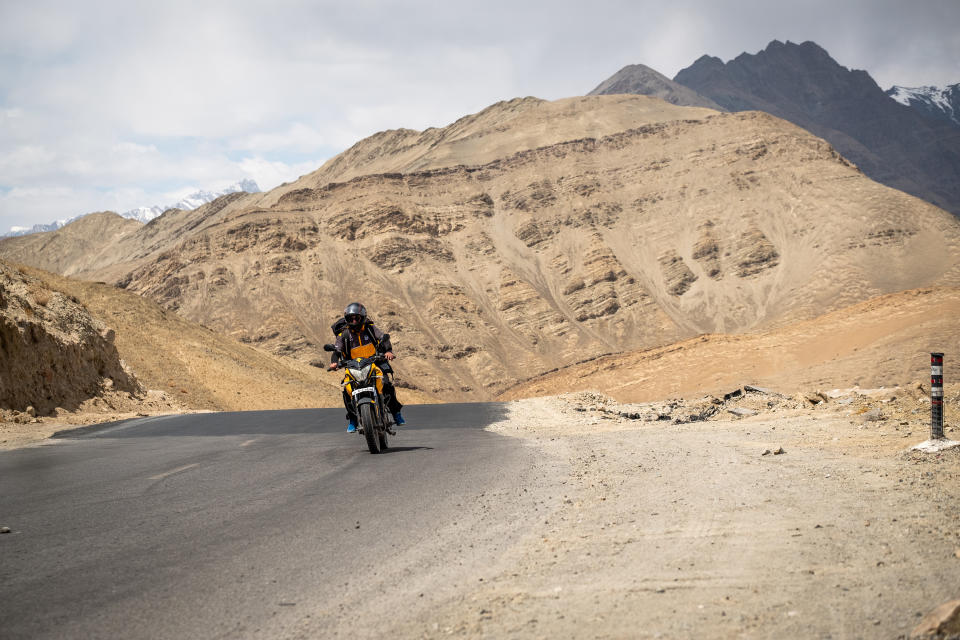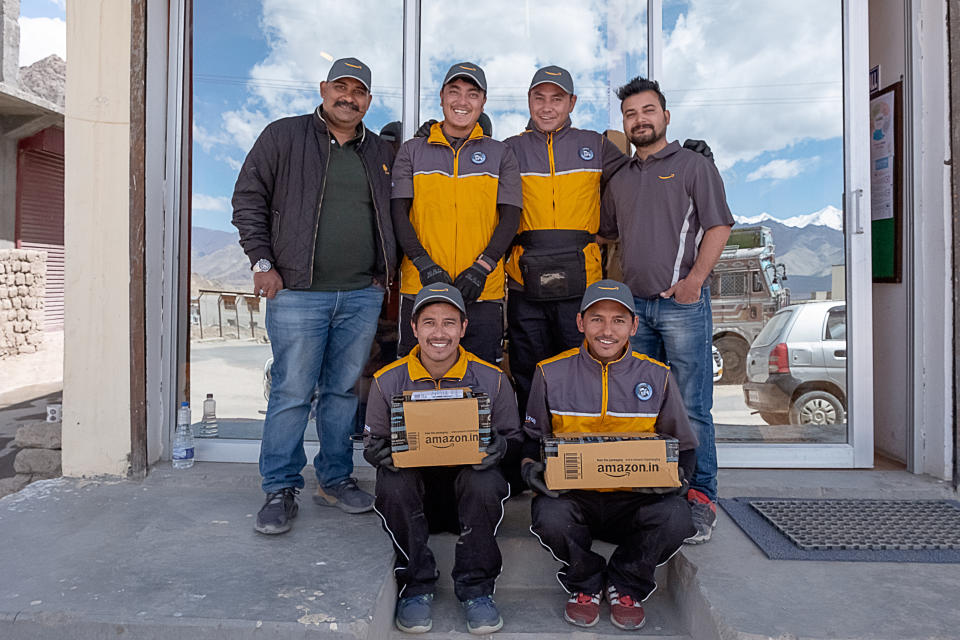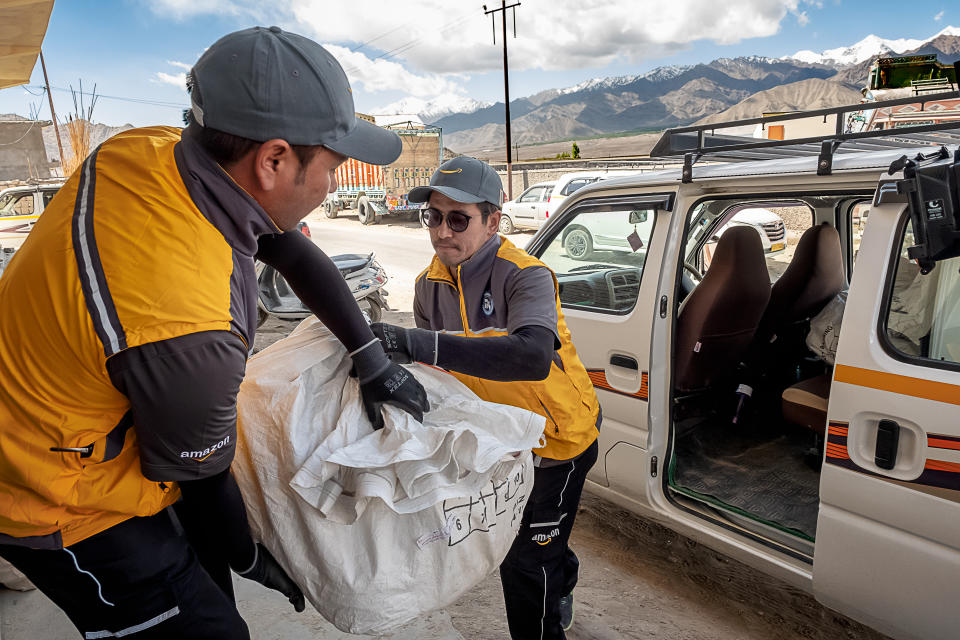A closer look at Amazon's 11,561-foot delivery operation

Amazon has always enjoyed flexing its logistics muscles. It made free shipping table stakes in retail, upped the ante to two-day shipping, and expanded into same-day shipping. It has rolled out lockers, cubbies in apartment buildings, to-the-block package tracking, and it even has a system in which delivery people can leave packages inside your home.
The company’s latest feat? Delivering packages at 11,000 feet. It may sound like a gimmick, but it illustrates the company’s desire to penetrate even the most niche global market as a proof of concept. Amazon does this because it can.
It’s certainly not a gimmick to the people of Leh, a small Himalayan village in India, where Amazon recently opened operations.

“Our vision is to be Earth’s most customer-centric company; to build a place where people can come to find and discover anything they might want to buy online,” said Tim Collins, Amazon’s vice president of global logistics. “Our efforts in Leh are a great representation of this vision.”
With roads only open April to October because of snow, and no railroad system, logistical challenges have prevented traditional brick-and-mortar stores from setting up in the remote area, leaving residents relying on friends and family bringing any goods beyond the basics. Now, they have Amazon Prime year-round, and for prices far lower.

Amazon, which is providing the first e-commerce in the region, partnered with Incredible Himalaya, a local delivery service provider with four delivery personnel making door-to-door deliveries, often with the help of motorcycles.
Initial feedback from the residents of this high-altitude town have been very positive, Amazon said, both in terms of job possibilities in a remote area with mostly tourism and seasonal jobs, and in terms of getting the daily goods residents want. And for a region that has previously only had a central location for picking up packages, residents of Leh have appreciated getting door-to-door delivery for the first time.

If Amazon can replicate its Leh operation in other difficult-to-penetrate parts of the world, there may be a shift similar to what happened with the internet for similar places. While some parts of the world had access to the internet before they had smartphones, much of the world leapfrogged to smartphones because wireless technology has a considerably lower barrier to entry once it’s established. This proof of concept illustrates a comparable principle in retail: that some places that simply can’t handle a full-service brick-and-mortar store may find a comparable solution as e-commerce logistics improves.
Ethan Wolff-Mann is a writer at Yahoo Finance focusing on consumer issues, retail, and personal finance. Follow him on Twitter @ewolffmann.
Amazon’s in-house brands are quietly taking over the site

 Yahoo News
Yahoo News 